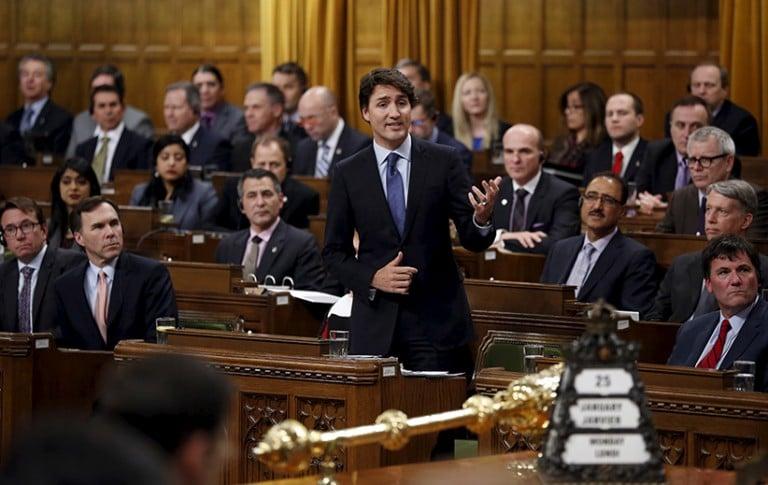Watch: Justin Trudeau apologizes for 1914 Komagata Maru incident
The Prime Minister gave Canada’s formal apology for a dark incident in the country’s history

Canada’s Prime Minister Justin Trudeau speaks during Question Period in the House of Commons on Parliament Hill in Ottawa, Canada, January 25, 2016. (Chris Wattie/Reuters)
Share
In 1914, more than 300 people from what was then British India stuffed themselves onboard the Japanese steamship the Komagata Maru in Hong Kong, in search for a better life in Canada. But when they arrived at the Burrard Inlet in B.C., the ship wasn’t allowed to dock: Despite the fact that they were British citizens, just like the people of Canada at the time, immigration laws prevented them from migrating via a non-continuous journey from their home country. A long purgatory awaited them, and when the ship was finally forced to return to India, only 20 people were allowed to remain in the country.
Nineteen of the passengers were killed in a skirmish with British authorities. Dozens more were imprisoned, or forced into hiding.
It was a dark, yet relatively unknown moment in Canada’s history. Now, six years after the B.C. legislature apologized for the incident, Prime Minister Justin Trudeau will rise in the House of Commons to deliver Canada’s formal apology—the second prime ministerial apology since Stephen Harper’s apology for residential schools in 2008, and since Harper’s unofficial apology in B.C. that same year.
Watch Trudeau’s apology below.
A timeline of some events leading up to the Prime Minister’s apology:
May 1914: The Japanese steam ship Komagata Maru anchors just outside Vancouver, B.C., with 376 passengers on board _ all Indians who were at the time also British subjects. The passengers were seeking to challenge existing immigration laws which refused entry to any Indians who had not arrived in Canada via a continuous journey from the home country _ a nearly impossible feat at the time.
June 1914: Twenty passengers who had previously resided in Canada are allowed in, but the rest are required to stay on the ship.
July 1914: After court hearings and clashes with authorities, the ship is finally escorted out of Canadian waters and sets sail for Calcutta, India.
September 1914: Police in India attempt to force the passengers onto trains for Punjab; a riot ensues and 19 people are killed. Others are arrested or go into hiding.
2002: Alliance MP Gurmant Grewal presents a petition in the House of Commons calling on the Liberal government of the day to issue an apology.
2006: Conservative Prime Minister Stephen Harper says he’ll consult with Indo-Canadians to determine how to recognize the “sad moment” in Canadian history.
2007: NDP put forward a motion calling on the government to apologize but it’s voted down by the Conservatives.
May 2008: Liberal MP Ruby Dhalla, one of the first Sikh women elected to the House of Commons, introduces a similar motion and it passes later that month.
May 2008: The B.C. legislature passes its own resolution apologizing.
August 2008: Prime Minister Stephen Harper gives a speech at a major South Asian festival in B.C. and issues an apology. It’s almost immediately rejected by several prominent organizations as it was not presented in the House of Commons.
May 2012: The NDP puts forward a new motion calling for an apology in the House of Commons. The motion is voted down by the Conservatives.
August 2015: Liberal Leader Justin Trudeau repeats 2008 pledge that, if elected, his government would issue a formal apology in the House of Commons.
April 2016: Trudeau announces he will issue the apology in the House of Commons on May 18, 2016.